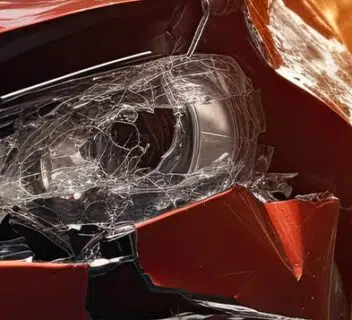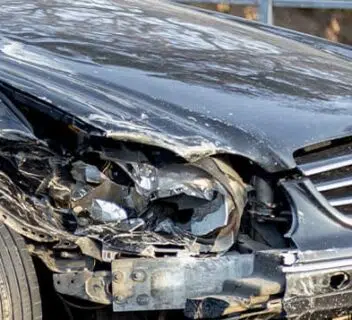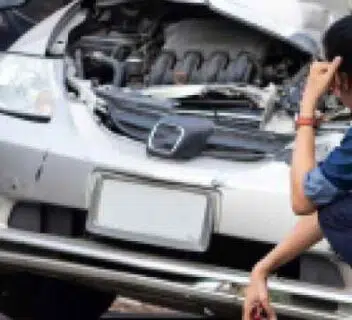Navigating the aftermath of a car accident can be daunting, particularly when it involves a parked vehicle. Imagine the unsettling feeling of discovering that someone hit your parked car. The scenarios can be varied: from someone returning from grocery shopping only to find a dent with no note, to a driver who accidentally brushes against a parked car and leaves in a hurry. These are instances that play out frequently on our roads and parking spaces.
According to an Allstate Insurance study from 2010, 69 percent of all hit and runs in the U.S. involve parked cars. If your parked car was damaged in a hit and run incident, you may be feeling lost and confused about what to do – after all, it’s not clear whether your insurance provider will cover the damages, or whether you’ll be able to identify who caused the collision so that you can contact them for insurance information or compensation.
Given the complexities of hit and run accidents, here are some considerations to keep in mind as you proceed.
When a hit and run in a parking lot occurs, many questions arise. Does insurance cover a hit and run parked car? Will you need an accident report, and does it matter whether it’s an official accident report? What is the claims process and what does it look like? What are the implications of your parked car being hit concerning your auto insurance premium? How crucial are photos of the damage? How immediately should one report the accident to ensure full collision coverage? Comprehensive coverage is important if the damage is severe, for example, but getting insurance pay isn’t always straightforward.
It’s essential to be equipped with the right information and know the steps to take when faced with such situations. As the victim tries to piece together what happened, gather evidence, identify eyewitnesses, and move forward with legal remedies, having clarity on the process can significantly ease the strain of the situation.
In this guide, we’ll detail what you should do in the unfortunate event of a hit and run involving your parked car.
What Should I Do If Someone Hits My Parked Car?
Discovering that your vehicle has been hit while parked can be an upsetting and confusing experience. You may find yourself overwhelmed with questions about the best course of action. This guide aims to provide a comprehensive roadmap for dealing with such an incident, covering everything from gathering evidence to dealing with insurance claims.
Initial Steps When You Discover the Damage
- Check for the Other Driver or a Note: Upon noticing the damage, your first step should be to look for the other driver. If they’re still around, exchange information including names, contact details, insurance information, and vehicle registration numbers. If the driver has left, check for a note with their contact and insurance details.
- Look for Witnesses and Security Footage: If no note is left and the driver is absent, search for potential witnesses who might have seen the incident. Their testimonies can be invaluable. Additionally, check if there are security cameras in the area that might have captured the collision. Speak to security personnel or property owners to gain access to this footage.
- Document the Scene: Take clear photographs of the damage to your vehicle from multiple angles. Also, photograph the surroundings to provide context about the location of the incident. This visual evidence is crucial for insurance purposes and, if necessary, legal proceedings.
- Contact the Police: If the damage is significant, it’s advisable to call the police. They can file a report, which not only helps in the insurance claim process but also in legally documenting the event. In some jurisdictions, it’s required by law to report such incidents to the police.
- Notify Your Insurance Company: As soon as possible, inform your insurance company about the incident, even if you don’t have the other party’s details. Provide them with all the information and evidence you’ve gathered. If the other driver left their details, contact their insurance company as well.
Dealing with Insurance
- Understanding Your Coverage: Understand the specifics of your insurance policy. Does it cover hit-and-run incidents? Are you covered for uninsured motorists? Knowing these details will help you understand how much of the repair costs your policy will cover.
- Avoid Engaging Without Consulting an Attorney: Discussions without an attorney can lead to subtle, undermining disclosures that could result in a lower payout or even an insurance claim rejection. As the claimant, unless you’re trained in the law you will not necessarily know what to say and what not to say – that’s where an attorney comes in.
- Filing the Claim: When filing a claim, be as detailed as possible. Provide all the evidence you’ve gathered, including photos, witness testimonies, and the police report. Be honest and thorough in your account of the incident.
- Managing Repairs: Depending on your coverage, you may have to initially pay for repairs out of pocket, especially if the other driver is unidentified. Keep all receipts and documentation for reimbursement purposes.
Legal Considerations
- Understanding Hit-and-Run Laws: Familiarize yourself with local hit-and-run laws. In many places, leaving the scene of an accident without providing contact information is a criminal offense.
- Seeking Legal Advice: If you face challenges in getting your claim accepted or if the other party disputes their involvement, consider consulting with a lawyer. Legal professionals can offer guidance and representation, ensuring that your rights are protected.
Preventative Measures for the Future
Choosing Safe Parking Spots: Try to park in well-lit, secure areas with surveillance cameras. This not only deters potential hit-and-run drivers but also ensures that any incident is recorded.
Investing in a Dash Cam: Consider installing a dash cam with parking mode in your vehicle. This can provide crucial evidence in case of any such incidents in the future.
Being the victim of a parking lot collision can be a distressing experience, but knowing how to effectively respond can alleviate some of the stress and uncertainty. By following these steps, you can ensure that you’re adequately prepared to handle the situation, both practically and legally. Remember, if you’re ever unsure about what to do, seeking professional legal advice can provide clarity and support.
Navigating the aftermath of a hit and run involving a parked car can be daunting, but being armed with the right information and steps to take ensures that the situation is handled effectively and ethically.
Understanding your responsibilities and rights is paramount. Always remember to prioritize safety, act responsibly, and seek guidance when needed.
Car accidents, even those involving stationary vehicles, have legal, financial, and moral dimensions. And in such trying times, remember that insurance providers, security personnel, and legal experts are there to assist.
Stay informed, stay calm, and ensure you make the best decisions moving forward.


